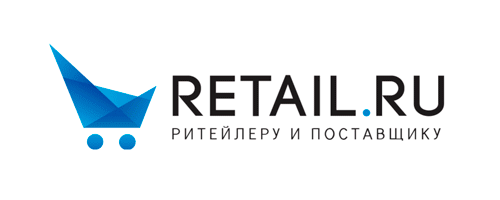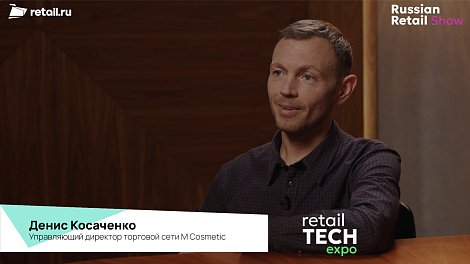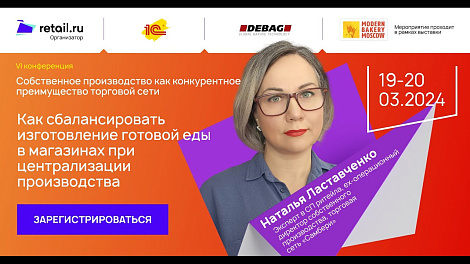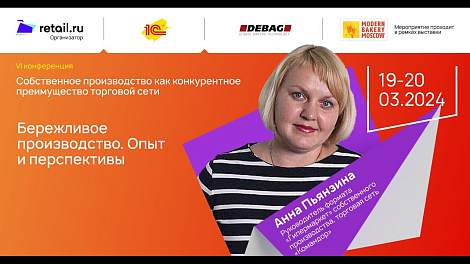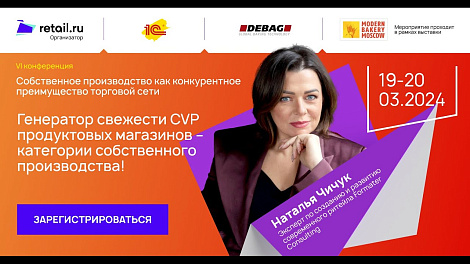www.retail.ru
Kadochnikova Elena
 Leslie Mueller Fletcher currently works in the Retail and Consumer Goods practice of A.T. Kearney in Moscow, which she joined in May of this year. Prior to this, Leslie was the Senior Director of International Strategy at Wal-Mart Inc., where she led new market entry strategy development (including Russia) and strategic planning across the fourteen markets where Wal-Mart is present outside the US. Leslie received her MBA from the University of Chicago Graduate School of Business, where she was a Distinguished Fellow, and a Masters degree in International Relations also at Chicago. On good days, Leslie speaks Russian fluently. On bad days, she misses her dogs who still live in Bentonville, Arkansas. We have asked Leslie about Russian retail industry today.
Leslie, what are you thinking about Russian retail industry today? Is there are still attractive for investor?
I believe Russia and adjacent countries like Ukraine will remain attractive destinations for investment for the foreseeable future. This opinion is based on over two years of detailed study on Russia and emerging markets while I was at Wal-Mart, including interviews with international companies present in Russia, and also A.T. Kearney’s index of the best emerging markets for retail investment (Global Retail Development Index). The A.T. Kearney GRDI ranks Russia as the 3rd top priority for investment this year after Vietnam and India. Despite recent stock market volatility linked to the global financial situation, the fact remains that Russia has a strong and growing consuming class driving demand for new products and a modern shopping experience. Strong reserves from oil revenues and conservative government spending mean that Russia will likely weather the current economic storm, and continue to be one of the strongest growing retail markets. Retail consumption correlates most strongly to GDP growth in Eastern Europe, therefore even if the pace of growth in Russia slows through the crisis, overall retail spending should continue to grow faster than the global average - especially for food and other basic needs.
Of course the GRDI findings simply point to the best opportunities available to any retailer or financial investor. For strategic investors, “attractiveness” of Russia must be understood within the context of how their particular offering (format, assortment, image) can uniquely capture some of the growing pie of the retail market vs. the strong local and international competitors already present today. Some niches or segments may be more attractive than others, and we believe there are still voids for innovative retailers. Present day retailers in Russia have focused on expansion and operations until now, not a tight vision of differentiation based on detailed customer research. International retailers who have expertise in localization of brands and customer responsive innovation will do well in Russia as the market becomes more competitive.
We can predict that if the global market continues to impact Russia, this will favor investment in both soft and hard discount concepts, and contract manufacturing for private label to improve margin mix and stress price competitiveness. Mass and discount retail may be the most attractive segments for investment heading into a crisis. Also, mass retail tends to be a high cash flow (typically low leverage) business, and thus attractive to private equity investors active in the region.
How do you estimate the dynamic of cost growth in the next two years?
With rapid growth comes supply constraints on many key cost drivers within the retail industry, like labor, rental/land costs, energy, and transportation. Store salaries have grown more than 30% (compound annual growth) since 2002; both salary expectations and employee turnover are expected to continue to climb in the next two years. The cost per square meter of commercial space in Moscow is now higher than London, with rental costs per square meter growing faster than 20% year-over-year in Moscow, and almost 10% in the regions. Cost of rail, road, maritime, and air transportation indexed vs. 2002 has grown over 15%; the scarcity of containers, rail car capacity, and good roads means that these costs will continue to climb in the next two years despite public/private efforts to increase infrastructure capacity. In fact, these pressures may further escalate the development of third party logistics industry in Russia.
These costs are particularly relevant for Russian retailers today given two facts. One, major retailers all have plans to expand to the Russian regions, putting pressure on limited supply for these core retail inputs. Second, as the major retailers IPO or seek external investors to fund growth, they are pressured to monitor not just the sales line, but also EBITDA margins.
What should Russian retailers change in strategy of development in conditions of financial crisis? Where should leaders focus their efforts?
Short term, the crisis will force prioritization of investments until global liquidity (and the appetite of international investors) recovers. For store expansion planning, this means pursuing a more methodical approach (подход). Investment partners may not want to back development in the same cities (sometimes same “ring road” intersections) where multiple competitors will co-locate. Picking priority cities and specific locations where the retailer’s format and assortment is differentiated will help sustain margins of new stores during the crisis.
For retailers with a diverse set of formats and assortment, product mix during the crisis may need to focus more on food and basics. Share of wallet spent on luxury vs. basics may shrink(сократиться) in the short run.
Furthermore, large retailers can fund their own investments over time by finding quick-win operational improvements to free up operating cash. (below)
In sum, the crisis means that the smartest, not the fastest, retailers will survive. Finding cost effective expansion locations will be challenging… Customers may feel some pressure on disposable income, so will be more choosy – searching for the best products, prices, service and shopping experience… Suppliers will attempt to re-negotiate terms given the new economic situation… Retail leaders will have to dig a bit deeper into the detail of their businesses to manage tradeoffs inherent in all of these issues, while communicating a clear vision for brand and banners that resonates with the customer.
In conditions of financial crisis should Russian retailers must continue their expansion in regions or stop it?
Sometimes the smartest competitors invest into a crisis, instead of pulling out. This doesn’t mean that retailers should risk negative cash flows with an overly aggressive expansion plan. Rather, investing in priority cities now (defined above) may mean securing the best locations while others sit on the sidelines and wait for the crisis to pass.
You said that Russian retailers should define possibilities for faster revenue. What did you mean?
A review of assortment, pricing policy, space allocation, and promotions may reveal some quick-wins in category management which can be implemented as the retailer continues expansion.
For example, a review of SKU profitability may reveal a certain percentage of slow-moving goods which do not drive traffic and may in fact duplicate (substitute for) other offers already on the shelf. Deleting these items now prior to rapid roll-out can have a sizeable effect on both sales and inventory productivity.
We can predict that sales of basic items and low priced items will increase given both recent economic events and food inflation, especially in food formats targeted at the lower income customer. Retailers should account for this as both a potential constraint and opportunity as they optimize assortment.
In general, Russian retailers should focus on revenue improvements that can be implemented quickly and with few resources in order not to distract from expansion priorities. Often these solutions simply require better coordination between buying groups and store management, for example better coordination of promotion space allocation, plus a little analytical horsepower.
You told about selective price rises for goods on Retail Director Forum. What did you mean?
In the recent past, modern Russian retailers have primarily taken share from traditional trade (open market, older shops). They have not yet needed to focus on sophisticated pricing strategy to sustain high overall sales and like-for-like growth. In fact, while many retailers’ slogans claim some version of best price, every day low price, best value – in fact prices on similar items can still vary up to 30% in the same city.
As competition intensifies, and co-located modern shops become more common in both the large and regional cities, retailers will need to pay more attention to strategic pricing. According to the 2008 A.T. Kearney Global Retail Development Index, Russia is entering this period of competition now. Even for stores aiming to create a low price/best value image, not all SKUs will be critical to maintaining this image. Slower moving items which do not sell any more or less if the price changes (inelastic items) can sustain selective price increases, therefore funding margin investments in “Key Value Items” that drive customer traffic.
Leslie Mueller Fletcher currently works in the Retail and Consumer Goods practice of A.T. Kearney in Moscow, which she joined in May of this year. Prior to this, Leslie was the Senior Director of International Strategy at Wal-Mart Inc., where she led new market entry strategy development (including Russia) and strategic planning across the fourteen markets where Wal-Mart is present outside the US. Leslie received her MBA from the University of Chicago Graduate School of Business, where she was a Distinguished Fellow, and a Masters degree in International Relations also at Chicago. On good days, Leslie speaks Russian fluently. On bad days, she misses her dogs who still live in Bentonville, Arkansas. We have asked Leslie about Russian retail industry today.
Leslie, what are you thinking about Russian retail industry today? Is there are still attractive for investor?
I believe Russia and adjacent countries like Ukraine will remain attractive destinations for investment for the foreseeable future. This opinion is based on over two years of detailed study on Russia and emerging markets while I was at Wal-Mart, including interviews with international companies present in Russia, and also A.T. Kearney’s index of the best emerging markets for retail investment (Global Retail Development Index). The A.T. Kearney GRDI ranks Russia as the 3rd top priority for investment this year after Vietnam and India. Despite recent stock market volatility linked to the global financial situation, the fact remains that Russia has a strong and growing consuming class driving demand for new products and a modern shopping experience. Strong reserves from oil revenues and conservative government spending mean that Russia will likely weather the current economic storm, and continue to be one of the strongest growing retail markets. Retail consumption correlates most strongly to GDP growth in Eastern Europe, therefore even if the pace of growth in Russia slows through the crisis, overall retail spending should continue to grow faster than the global average - especially for food and other basic needs.
Of course the GRDI findings simply point to the best opportunities available to any retailer or financial investor. For strategic investors, “attractiveness” of Russia must be understood within the context of how their particular offering (format, assortment, image) can uniquely capture some of the growing pie of the retail market vs. the strong local and international competitors already present today. Some niches or segments may be more attractive than others, and we believe there are still voids for innovative retailers. Present day retailers in Russia have focused on expansion and operations until now, not a tight vision of differentiation based on detailed customer research. International retailers who have expertise in localization of brands and customer responsive innovation will do well in Russia as the market becomes more competitive.
We can predict that if the global market continues to impact Russia, this will favor investment in both soft and hard discount concepts, and contract manufacturing for private label to improve margin mix and stress price competitiveness. Mass and discount retail may be the most attractive segments for investment heading into a crisis. Also, mass retail tends to be a high cash flow (typically low leverage) business, and thus attractive to private equity investors active in the region.
How do you estimate the dynamic of cost growth in the next two years?
With rapid growth comes supply constraints on many key cost drivers within the retail industry, like labor, rental/land costs, energy, and transportation. Store salaries have grown more than 30% (compound annual growth) since 2002; both salary expectations and employee turnover are expected to continue to climb in the next two years. The cost per square meter of commercial space in Moscow is now higher than London, with rental costs per square meter growing faster than 20% year-over-year in Moscow, and almost 10% in the regions. Cost of rail, road, maritime, and air transportation indexed vs. 2002 has grown over 15%; the scarcity of containers, rail car capacity, and good roads means that these costs will continue to climb in the next two years despite public/private efforts to increase infrastructure capacity. In fact, these pressures may further escalate the development of third party logistics industry in Russia.
These costs are particularly relevant for Russian retailers today given two facts. One, major retailers all have plans to expand to the Russian regions, putting pressure on limited supply for these core retail inputs. Second, as the major retailers IPO or seek external investors to fund growth, they are pressured to monitor not just the sales line, but also EBITDA margins.
What should Russian retailers change in strategy of development in conditions of financial crisis? Where should leaders focus their efforts?
Short term, the crisis will force prioritization of investments until global liquidity (and the appetite of international investors) recovers. For store expansion planning, this means pursuing a more methodical approach (подход). Investment partners may not want to back development in the same cities (sometimes same “ring road” intersections) where multiple competitors will co-locate. Picking priority cities and specific locations where the retailer’s format and assortment is differentiated will help sustain margins of new stores during the crisis.
For retailers with a diverse set of formats and assortment, product mix during the crisis may need to focus more on food and basics. Share of wallet spent on luxury vs. basics may shrink(сократиться) in the short run.
Furthermore, large retailers can fund their own investments over time by finding quick-win operational improvements to free up operating cash. (below)
In sum, the crisis means that the smartest, not the fastest, retailers will survive. Finding cost effective expansion locations will be challenging… Customers may feel some pressure on disposable income, so will be more choosy – searching for the best products, prices, service and shopping experience… Suppliers will attempt to re-negotiate terms given the new economic situation… Retail leaders will have to dig a bit deeper into the detail of their businesses to manage tradeoffs inherent in all of these issues, while communicating a clear vision for brand and banners that resonates with the customer.
In conditions of financial crisis should Russian retailers must continue their expansion in regions or stop it?
Sometimes the smartest competitors invest into a crisis, instead of pulling out. This doesn’t mean that retailers should risk negative cash flows with an overly aggressive expansion plan. Rather, investing in priority cities now (defined above) may mean securing the best locations while others sit on the sidelines and wait for the crisis to pass.
You said that Russian retailers should define possibilities for faster revenue. What did you mean?
A review of assortment, pricing policy, space allocation, and promotions may reveal some quick-wins in category management which can be implemented as the retailer continues expansion.
For example, a review of SKU profitability may reveal a certain percentage of slow-moving goods which do not drive traffic and may in fact duplicate (substitute for) other offers already on the shelf. Deleting these items now prior to rapid roll-out can have a sizeable effect on both sales and inventory productivity.
We can predict that sales of basic items and low priced items will increase given both recent economic events and food inflation, especially in food formats targeted at the lower income customer. Retailers should account for this as both a potential constraint and opportunity as they optimize assortment.
In general, Russian retailers should focus on revenue improvements that can be implemented quickly and with few resources in order not to distract from expansion priorities. Often these solutions simply require better coordination between buying groups and store management, for example better coordination of promotion space allocation, plus a little analytical horsepower.
You told about selective price rises for goods on Retail Director Forum. What did you mean?
In the recent past, modern Russian retailers have primarily taken share from traditional trade (open market, older shops). They have not yet needed to focus on sophisticated pricing strategy to sustain high overall sales and like-for-like growth. In fact, while many retailers’ slogans claim some version of best price, every day low price, best value – in fact prices on similar items can still vary up to 30% in the same city.
As competition intensifies, and co-located modern shops become more common in both the large and regional cities, retailers will need to pay more attention to strategic pricing. According to the 2008 A.T. Kearney Global Retail Development Index, Russia is entering this period of competition now. Even for stores aiming to create a low price/best value image, not all SKUs will be critical to maintaining this image. Slower moving items which do not sell any more or less if the price changes (inelastic items) can sustain selective price increases, therefore funding margin investments in “Key Value Items” that drive customer traffic.
5 ноября 2008, 00:00
12116 просмотров
Leslie Mueller Fletcher, A.T. Kearney: Russia has a strong and growing consuming class
Статья относится к тематикам: Крупные мировые ритейлеры
Поделиться публикацией:
Подписывайтесь на наши новостные
рассылки,
а также на каналы
Telegram
,
Vkontakte
,
Дзен
чтобы первым быть в курсе главных новостей Retail.ru.
Добавьте "Retail.ru" в свои источники в Яндекс.Новости
Добавьте "Retail.ru" в свои источники в Яндекс.Новости
Загрузка
-
1.
-
2.
-
3.
-
4.
-
5.
-
1.
-
2.
-
3.Товар на полку: Уехать со склада: как продавать автомобили на маркетплейсах1304
-
4.Статья: Как изменятся цены на продукты в 2024 году1198
-
5.
